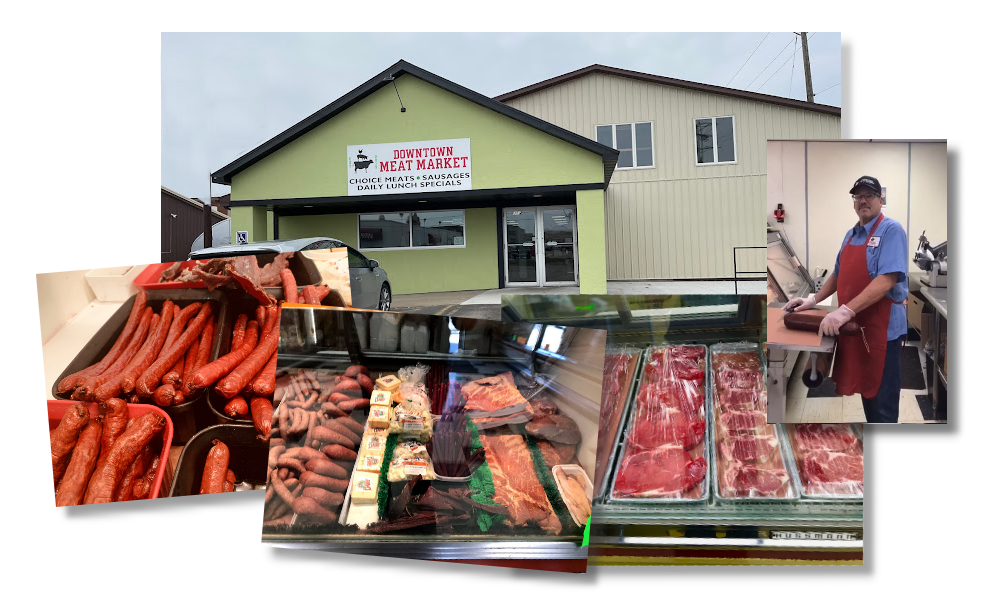Check Out Bagley Farms Meat Market Edwardsville IL for Farm-Fresh Meat and Specialized Cuts
Check Out Bagley Farms Meat Market Edwardsville IL for Farm-Fresh Meat and Specialized Cuts
Blog Article
Reveal the Art of the Butcher's Cut in a Modern Meat Market
In the ever-evolving landscape of modern-day meat markets, the butcher's cut has transcended its typical origins, merging olden workmanship with modern methods. What genuinely establishes the contemporary butcher apart is their capability to forge a much deeper connection between consumers and the beginnings of their meat.
Advancement of Butchery Methods
The advancement of butchery methods shows an abundant tapestry of development and adjustment driven by innovations in technology, changes in customer demand, and a deeper understanding of meat science. Historically, butchery was a craft passed down with generations, with approaches refined over centuries to optimize return and taste. Nevertheless, the commercial transformation ushered in mechanization, transforming typical techniques and enabling large handling.
The mid-20th century saw butchery strategies additionally refined by scientific understandings right into muscle biology and meat aging, boosting both tenderness and taste. Advancements like vacuum product packaging and refrigeration prolonged item shelf-life, allowing butchers to diversify offerings and boost quality assurance. This period also noted the increase of customized devices, such as band saws and meat slicers, which boosted precision and efficiency in meat processing.

Computerized systems now aid in monitoring animal provenance and optimizing cuts to meet details consumer preferences. Furthermore, a resurgence in artisanal butchery has arised, mixing traditional abilities with modern-day understanding to provide to customers seeking honest and sustainable meat options.
Recognizing Meat Cuts
Understanding the intricacies of meat cuts is necessary for both butchers and customers looking for high quality and value. For butchers, exact cuts show skill and regard for the craft, guaranteeing very little waste and optimum yield.

Comprehending muscle make-up is essential; muscles utilized more regularly by the animal tend to be tougher and are best matched for slow food preparation techniques, while less-used muscles, like those found in the loin, are a lot more tender and ideal for cooking or roasting. Familiarity with these differences equips customers to make enlightened options, improving their cooking ventures.
Selecting High Quality Meat
Choosing the appropriate meat entails more than just selecting an aesthetically enticing piece from the screen. bagley farms meat market edwardsville il. The art of selecting top quality meat needs a discerning eye and knowledge of particular features that symbolize freshness and excellence. Pay focus to the color; beef should have an intense, cherry-red hue, while lamb should exhibit a soft pink tone, and pork a pale pink. This shows the meat is fresh and hasn't been exposed to oxygen for also lengthy.
Secondly, take into consideration the marbling, which refers to the white streaks of fat within the muscle mass. Appropriate marbling is a vital indicator of inflammation and taste, as it thaws throughout cooking, enhancing the meat's juiciness. Keep in mind, higher investigate this site marbling commonly correlates with superior top quality cuts, such as USDA Prime.
Appearance is another critical variable; meat needs to feel solid to the touch, not slimed or extremely soft. In addition, be conscious of the scent. Fresh meat needs to have a clean, neutral smell, devoid of any type of sour or off-putting smells.
Combining Cuts With Food Preparation Techniques

Alternatively, harder cuts like brisket and chuck roast are abundant in collagen, which damages down right into check it out gelatin when cooked slowly. These cuts are ideal for braising or slow roasting, allowing the meat to tenderize over time and establish deep, complex tastes. Similarly, cuts such as brief ribs and pork shoulder fare well with slow-cooking methods, where prolonged cooking times change their robust structures right into succulent recipes.
Lamb shanks and oxtail, which require long term food preparation to soften, are perfect candidates for stewing or slow simmering. These methods coax out abundant, passionate tastes while preserving dampness. By understanding the unique attributes of each cut, chefs and home cooks alike can raise their cooking productions, ensuring each dish is both pleasing and memorable.
The Butcher's Duty Today
Browsing the progressing landscape of the modern meat market, the butcher's role today prolongs beyond simple preparation of cuts. Contemporary butchers are cooking craftsmens, teachers, and advocates for lasting practices. They link the void in between the farm and the fork by making sure honest sourcing, recognizing pet husbandry, and focusing on transparency in the supply chain. This change reflects the growing customer demand for top quality over amount, where provenance and pet well-being are paramount.
Along with crafting precise cuts, butchers now involve straight with clients, offering cooking guidance and tailoring options to match individual needs and choices. Their experience in meat aging, marbling, and taste accounts encourages customers to make enlightened choices, improving their cooking experiences. This tailored solution exemplifies the butcher's advancing duty as a trusted consultant in the kitchen.
In addition, butchers are pivotal in minimizing waste, using whole visit site pets to create varied products such as sausages and stocks. This extensive strategy not just respects the animal yet likewise straightens with modern sustainability objectives. In this means, the contemporary butcher embodies both tradition and innovation, adapting to an ever-changing market while protecting the artistry and honesty of their craft.
Final Thought
Proficiency in comprehending diverse meat cuts and quality signs equips butchers to provide enlightened referrals, straightening details cuts with optimum cooking techniques. By recognizing historic techniques while embracing contemporary demands, the butcher's function remains vital in today's innovative meat market.
Report this page